A history blog dedicated to the early modern period. Mostly 17th and 18th-century Colonial America and France
Don't wanna be here? Send us removal request.
Text
"Madame de Maintenon was seated, facing the plain, in a litter chair with three window-panes...The King was standing to the right of her chair, and every second moment he would bend down to explain to Madame de Maintenon what was going on in the exercises. Each time, she would lower her window four or five fingerlengths...the King spoke to no one but her, other than to give out orders...Everyone was astonished and embarrassed and pretending not to notice, but they were watching this more attentively than anything the army was doing..."
Louis de Rouvroy, Duc de Saint-Simon
The Secret Wife of Louis XIV, Francoise d'Aubigne, Madame de Maintenon - Veronica Buckley (pg. 368)
#17th century#Louis xiv#Francoise d'aubigne#Madame de maintenon#Quote#The French court is so dramatic#House of bourbon#Duc de Saint-Simon
6 notes
·
View notes
Text

1830 Louise-Adéone Drölling - Marie-Joseph-Gilbert du Motier, marquis de La Fayette
(Musée de l'Armée)
71 notes
·
View notes
Text

Painted dish. Talavera, 1651-1675
--------
Plato pintado. Talavera, 1651-1675
Pasta cerámica
Museo Nacional de Artes Decorativas, CE00019
28 notes
·
View notes
Photo

Baldassare Franceschini (Volterrano), The Chevalier de Lorraine, depicted as Ganymede, late 17th cent.
#17th century#1650s#Chevalier de Lorraine#philippe of Lorraine#house of guise#Baldassare franceschini
37 notes
·
View notes
Text

The Carousel of 1662
Henri Jules de Bourbon, The Duke of Enghien as the King of the Indians
#17th century#Henri Jules de bourbon#Henri Jules#Prince of conde#Prince de conde#Duke of enghien#1660s#The carousel of 1662#Bourbons#France#Duc d'enghien
0 notes
Text

Portrait of Louis XIII by Marie-Victoire Jaquotot.
32 notes
·
View notes
Text
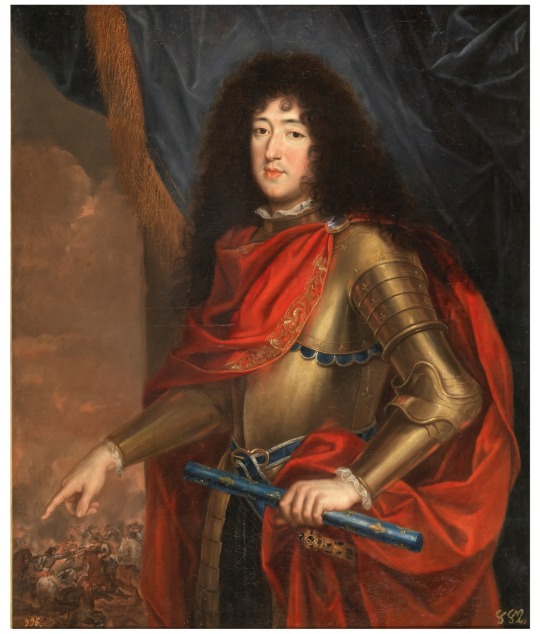
Philippe I, Duke of Orléans. Circle of Pierre Mignard.
#duc d'orléans#pierre mignard#Philippe#Duke of Orleans#Monsieur#Philippe I#house of bourbon#France#17th century#Portrait
20 notes
·
View notes
Text









#Emilie Preyer - Still-life with Fruit#Jacques Linard - Still life with Bowl of Plums#Jacob van Walscapelle - Flowers in a Glass Vase. ca. 1670#Jan Davidsz de Heem - Feston of Fruits and Flowers. ca. 1660-70#Anthony van Dyck - Drunken Silenus supported by Satyrs. ca 1620#Ambrosius Bosschaert the Elder - Flower Still Life. ca. 1614#Abraham Brueghel - Woman Grasping Fruit. 1669#Cornelis Jansz de Heem - Still life with fruit oysters and a roman goblet#17th century#1600s#Art
58 notes
·
View notes
Text

Louis-Auguste de Bourbon (1670-1736).
7 notes
·
View notes
Text
"inferior in rank to ourselves"
The Viscount de Noailles and myself were dependent upon our parents, and only possessed the income which they assigned to us. La Fayette, on the contrary, although younger, and inferior in rank to ourselves, found himself, by a singular chance, at the age of nineteen years, sole master of his property, and of his person, and the independent possessor of a hundred thousand livres a year.
Louis Philippe, comte de Ségur, Memoirs and Recollections of Count Segur, Ambassador From France to the Courts of Russia and Prussia, Wells And Lilly-Court-Street, Boston, 1825, p. 85. I find such comments on La Fayette always to be very interesting, because whenever La Fayette is discussed in an American context (in other words; most of the time), he always was THE Marquis. But back home in France, in a truely aristocratic society, he was one of many and did not even have the most exhaulted rank. You could even argue that La Fayette, to a degree, was self-made. Sure, he came from a rich and aristocratic family and married into another rich and aristocratic family and therefor had a very privileged starting point, but this alone did not bring him the prestige, fame, respect or recognition that he enjoyed towards the end of his life.
13 notes
·
View notes
Text

Château de Maintenon, Maintenon, Eure-et-Loir, France
#Chateau de maintenon#Madame de maintenon#Francoise d'aubigne#france#French architecture#17th century
1K notes
·
View notes
Text

Diego Velazquez, Infanta Maria Teresa, ca. 1652-1653, oil/canvas (Kunsthistorisches Museum, Vienna)
#Maria Theresa of Spain#House of Habsburg#17th Century#Diego Velázquez#House of Bourbon#Queen of france#Portrait#Art#Spain#France
15 notes
·
View notes
Text


Woman’s Gown
c. 1775-1780
silk, liseré satin, bobbin lace
Pitti Palace
1K notes
·
View notes
Text

Slipware, probably King Charles II of England and his 24-year-old bride, Catherine of Braganza, daughter of the king of Portugal, 1662
Thomas Toft
Slipware, lead-glazed earthenware decorated with ‘slip’ – a sloppy mixture of clay and water.
Fitzwilliam Museum, Cambridge
A cream slip covers the front surface of the plate, while darker slips are used for the decorative elements. These have been trailed across the surface of the vessel, rather like iced decorations upon a cake. This technique reached its peak in the seventeenth century in the potteries of Staffordshire, and much of the best work had Royalist imagery.
The name of Thomas Toft appears at the bottom in large, lively capital letters. Toft is today regarded as the most important producer of slipware pottery in seventeenth-century Staffordshire, but almost nothing is known of his life. Over thirty dishes carry his name, although some of these may have been made by his son, also called Thomas.
#england#art#17th century#Thomas Toft#fitzwilliam museum#Stuarts#catherine of braganza#Charles ii#Ceramics
8 notes
·
View notes
Text
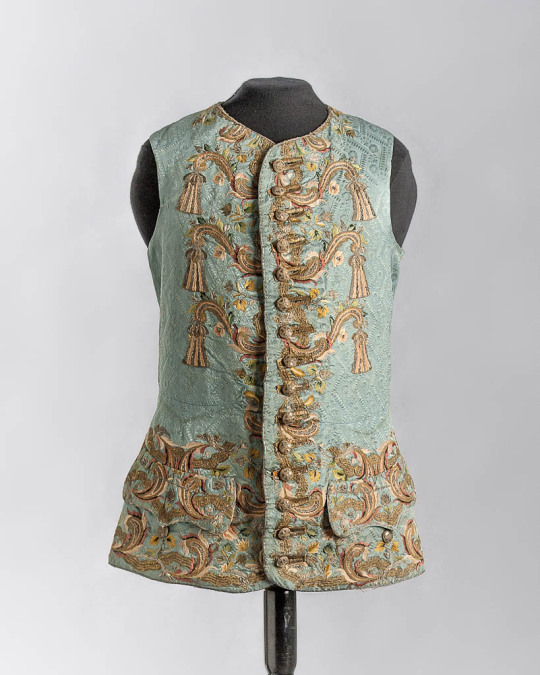
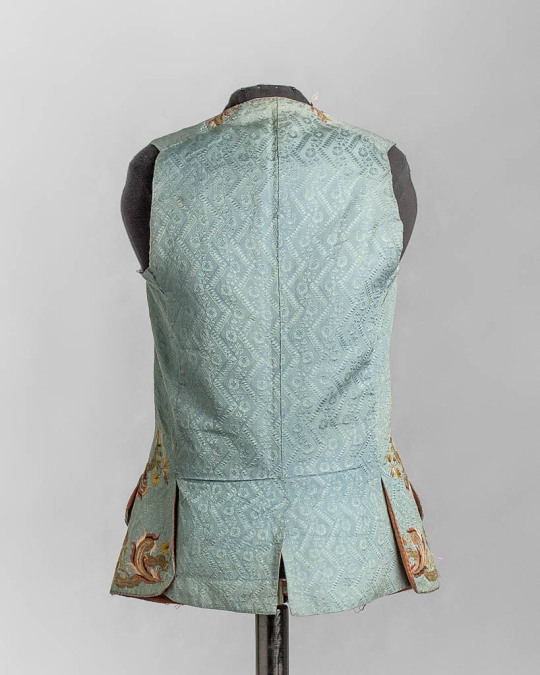
early 18th century Waistcoat (Hungary)
metal yarn, silk fabric
(Museum of Applied Arts, Budapest)
473 notes
·
View notes
Photo
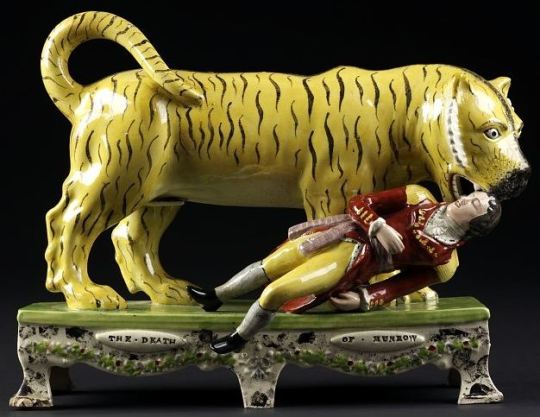
ca. 1830, “Death of Munrow”
This delightfully naïve ceramic sculpture shows the death of Lieutenant Hugh Monro, a young British army officer serving in India, who was mauled by a tiger while picnicking on a hunting trip in 1792.
via the Victoria & Albert Collection
958 notes
·
View notes
Text
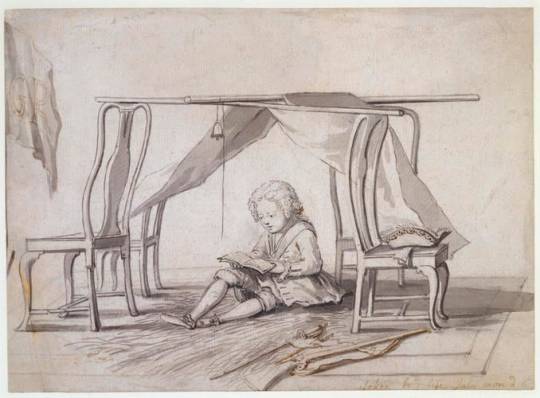
The future King George III, age 9, reading in a blanket fort in 1747
560 notes
·
View notes